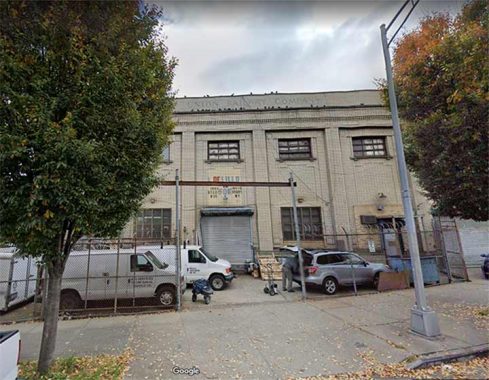
If you look a street map of the southern Bronx, Brook Avenue seems to act oddly, running in a straight line north out of Mott Haven, but then curving northwest and then northeast in Morrisania, forming a complicated intersection at Gillespie Square with Webster, Melorose and Park Avenues at the Metro North RR cut. That’s because when it was laid out in 1876 it overlays Mill Brook, which once ran on the surface but is now underground. If you look at this outline map of the Bronx in 1874, Brook Avenue nearly exactly follows the Mill Brook that appears on the map.
Today, I’m concerned with a yellow brick building on the east side of Brook Avenue just north of Gillespie Square with the words “Union Railway Company” on the roofline. Today it seems to be a warehouse connected with hardware wholesaler DeLillo and Sons. But what was the Union Railway Company?
This would appear to be a car barn or repair shop associated with the trolley line run by Union Railway, formed in 1892 by the merger of the Harlem Bridge, Morrisania and Fordham Railway with the North Third Avenue and Fleetwood Park Railway and the Melrose and West Morrisania Railroads.Like the many railroads in Queens that gradually merged and folded into the Long Island Rail Road, son there were many different railcar lines in the Bronx that started out as horsecars in the mid-19th Century. Union Railway itself later merged with the Third Avenue Railway, which wound up operating most of the trolley lines in Manhattan and the Bronx. The Third Avenue ran the two boroughs’ (as well as the Steinway Lines in Queens from 1922-1938) until all streetcars in Manhattan and Bronx were converted to diesel buses in 1948.
As always, “comment…as you see fit.” I earn a small payment when you click on any ad on the site.
Thanks FNY correspondent Gary Fonville.
11/29/21
